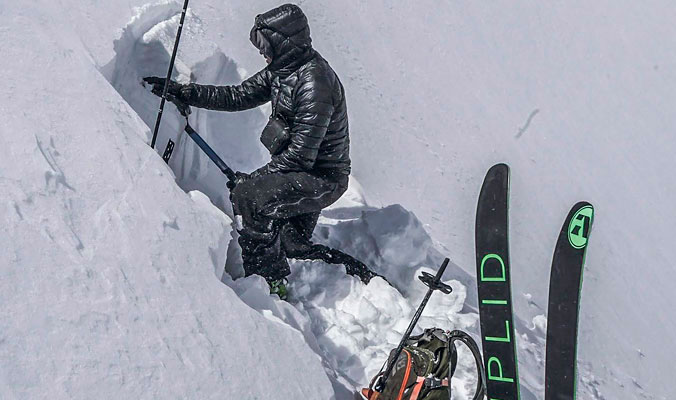Eduardo Gonzalez, 46, is an avalanche forecaster for Pyrenees Heliski, based in the town of Vielha, population 4,000 and the capital of Val d’Aran. Gonzalez’s interest in forecasting began during a five-year freeskiing stint in British Columbia in the early 2000s—in 2006 he was caught in a slide in Whistler, B.C., triggering his decision to better understand the risks and dangers surrounding snowpack. The following year, he started his training to become an avalanche forecaster and earned his Avalanche Operations Level 1 in Fernie, B.C. in 2007 and his Level 2 in 2015. Gonzalez then took that knowledge back to his home mountains, where he now issues a daily bulletin through Pyrenees Heliski for professional use, is a member of the Association for the Knowledge of Snow and Avalanches (ACNA) and runs operations for his organization, Mountain Lines, a ski and mountain biking organization that offers guiding and educational opportunities focused on safety and decision making in the mountains.

I remember the time I spent in Canada as a great experience where I learned a great deal. There I really began to learn to understand how the world of snow and avalanches behaves. I was there five seasons—the first season in Kicking Horse, B.C., and the following in Whistler.
What made me return from Canada was, first of all, my family preferred to be [in the Pyrenees]. Of course I think about Canada a lot, and it was an experience that I would not mind repeating. On the other hand, the Pyrenees is a great place to practice mountain sports. It’s very accessible and has very good terrain to find good descents.
With my return to the Pyrenees, the first big difference was that I went from an oceanic climate with a lot of precipitation in Whistler to a much more variable climate. Here, on average, the precipitation is about six meters annually, but that figure can double, as well.
In the last few years we’ve had persistent weak layers in more than one snow level, each with different spatial distribution and different sensitivity. In the Pyrenees we find a layer more similar to [an intercontinental snowpack], with all that that implies.
Another noteworthy characteristic of the Pyrenees is that we can have all types of avalanches. We can have long and stable periods of powder snow and very unstable periods where there is a persistent weak layer. Here is where it is of the utmost importance—essential, I would say—to have avalanche prediction.
There are five avalanche forecast reports in the Pyrenees: lauegi.cat, meteo.ad, meteofrance.fr, aemet.es and alurte.es. However, the main forecasting center is from Val d’Aran (lauegi.cat) and is one of the most modern and updated reports in Europe. Val d’Aran is a privileged place, since it has excellent terrain for backcountry skiing with an excellent configuration for snowfall and a first-class avalanche danger forecast.
The work of avalanche forecasting is exciting and emotional, both in the field as well as in the office. Preparing each report for the next day and the tracking of a weak layer make this work something dynamic and interesting. If you add all of this up, you can freeski every day in one of the most exclusive environments in Europe. All of this makes the job unique.
I hope [in the future] there is quality avalanche forecasting for all of the Pyrenees and that it allows for the safe growth of freesking. Within the sport of skiing there are many gaps in the knowledge of avalanches. There still has to be an evolution within the skiing and splitboard community.
Also, in the Pyrenees we have so much more terrain to discover from the point of view of a freerider. There are some guiding groups, like Freeride Valle de Aran, but there could be more, and that would enable access to more corners of the Pyrenees.
We are a small community. While in recent years backcountry skiing has grown, it is still marginal and centered more around the ski resorts. To be able to access this activity safely, you need base-level information that is not available at all sites, and avalanche accidents still occur even when the conditions or situation is quite clear.
I believe that this makes many choose not to practice off-piste skiing, however, with a good training and by using the avalanche danger bulletin in a responsible way, access into the mountain and the practice of backountry skiing and snowboarding becomes a safer and more responsible activity.










Related posts: